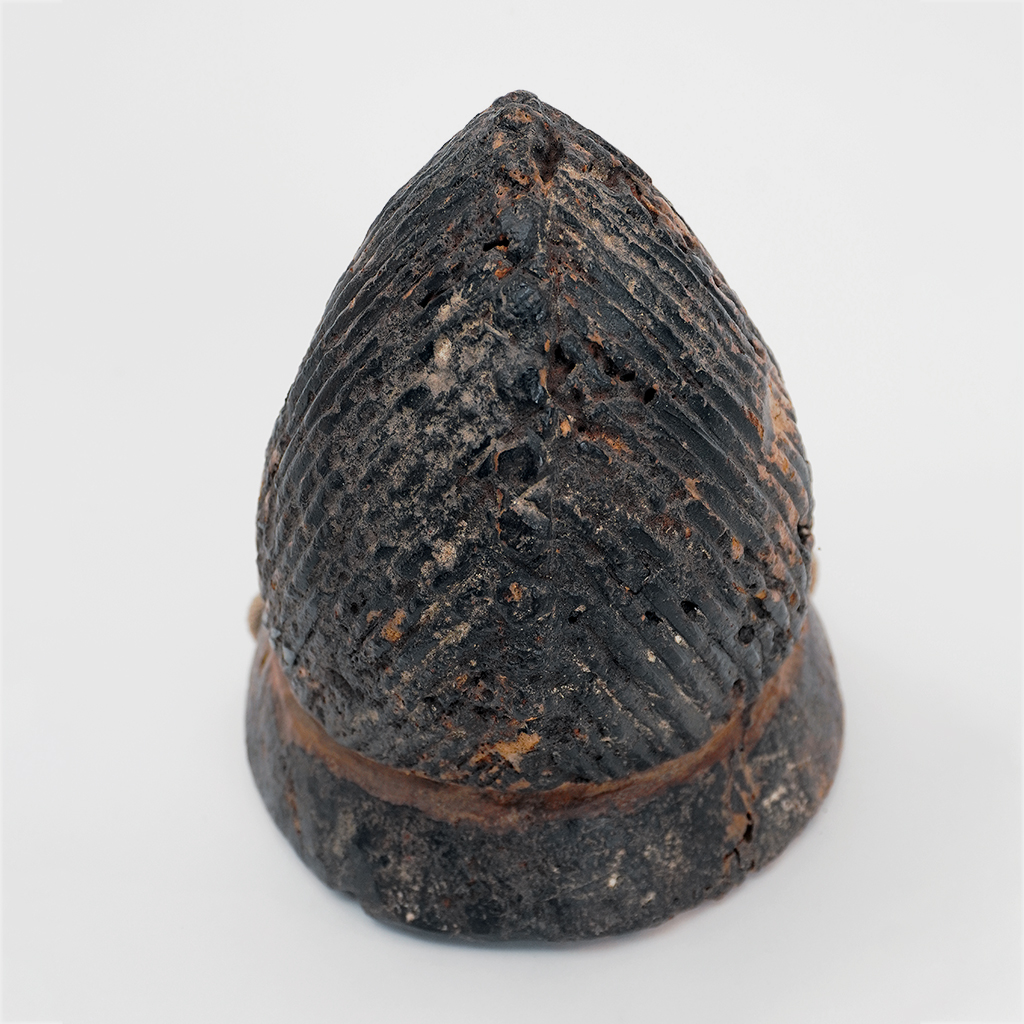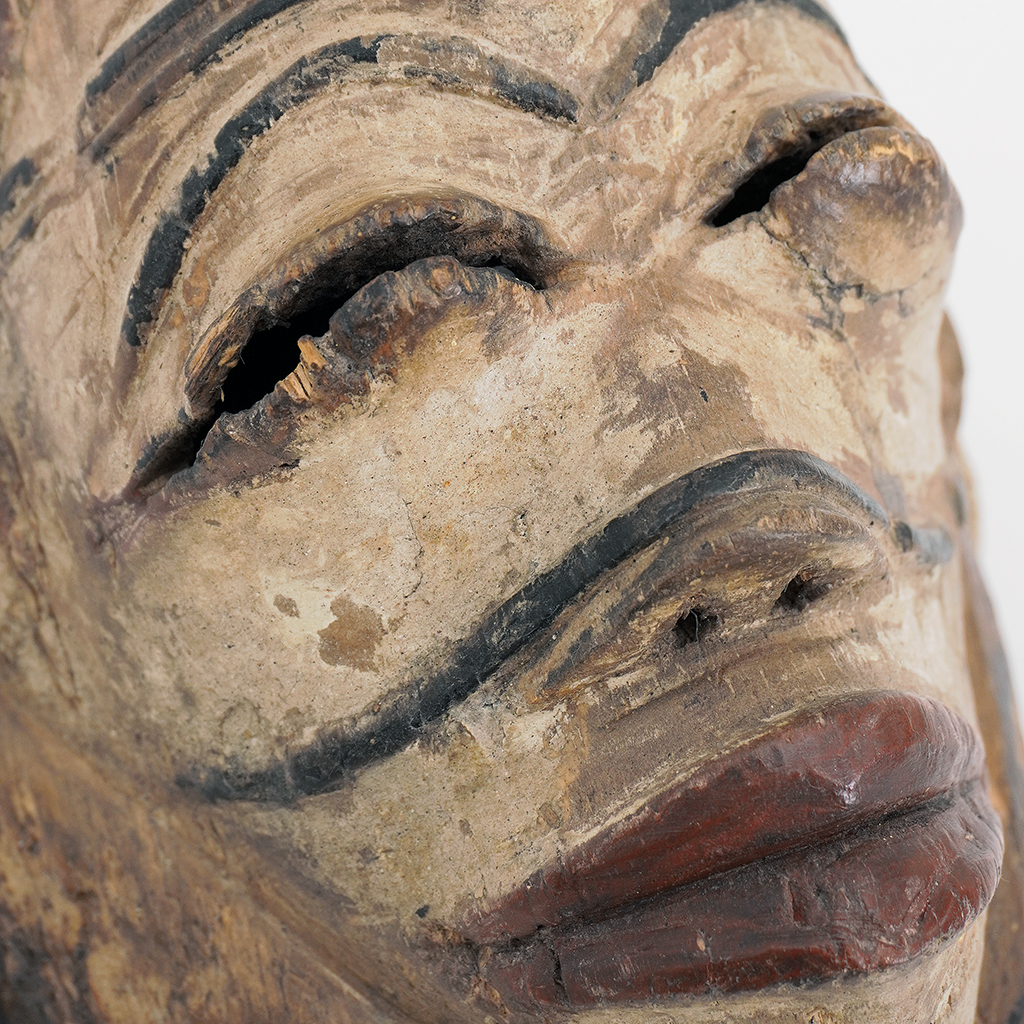PUNU TSANGHI MASK
Référence :
Punu Tsanghi mask in carved wood, kaolin and natural pigments, made in Gabon at the beginning of the twentieth century. Pfaff Collection.
Length : 7.09 in / 18 cm
Height : 11.81 in / 30 cm
Width : 8.66 in / 22 cm
Weigth : 6.61 lb / 3 kg
Contact us / Get in touch
Origin: Gabon
Period: Early Twentieth Century
Materials: Carved wood, kaolin and natural pigments
Historical: The Tsanghi style is less common than the Okuyi style, and therefore more sophisticated. Her high black hairstyle is parted in the center of the head, leading the eye to this area, which was initially tattooed with a deep red on her forehead. Highly arched eyebrows frame each slit eye. The full, slightly parted lips match the red color on the forehead. Most of the rest of the face is coated with kaolin, which in ancient times was mixed with powdered human bones. Red is made from guntsi seeds, black from muabi grains mixed with palm oil; The white comes from the kaolin mpembi.
The masks of Gabon are often referred to by the names of the rites in which they participate. They are involved in rites of a social nature, of purification or fertility, rites of reconciliation and justice, or finally rites of protection that are specially aimed at attracting the good graces of the ancestors. They were worn by dancers mounted on stilts, which explains the downward orientation of the face.
This ritual white eyeshadow, still in use throughout equatorial Africa, is called Pfemba. As a sign of communication with the supernatural world, white clay earth is used by both men and women.
Punu masks have inspired the followers of Fauvism.
Origin: PFAFF Collection, a French private collection built up by an airline pilot after the Second World War.
Marcel Pfaff (1910-1984), fighter pilot during the 2nd World War, demobilized in 1945, his friends of the time who are also his mentors, Dieudonné Costes and Maurice Bellonte, convince him to join civil aviation and the young company Air France ex-Aéropostale since 1933. For several years, it operated the Toulouse/Brazzaville route (with no less than 14 stopovers Dakar-Baloma-Conakry-Robertsfield-Abidjan-Accra-Lomé-Cotonou-Lagos-Douala-Libreville-Port Gentil-Pointe Noire-Brazzaville).
His many contacts on the spot allowed him to perfect his taste for African art and his attraction to strong pieces that were called fêtiches: Nkisi of the Songye, Nkondi with nails of the Bakongo, the Luba, LwaLwa, Yaka statues,… he quickly became very well known to the “antique dealers” of Brazzaville and Kinshasa (separated by the Congo River) who brought him the pieces directly to the airport – even if he was able to go twice to the East of the country, to Kisangani and Lubumbashi, which in the 50s and 60s represented a real adventure, in this country in full mutation, moving from the tutelage of Belgium to independence in often dramatic political shocks.
Later, he sailed the North Atlantic and Japanese routes, more compatible with his family life, becoming captain on the prestigious 747, before retiring in 1974.







